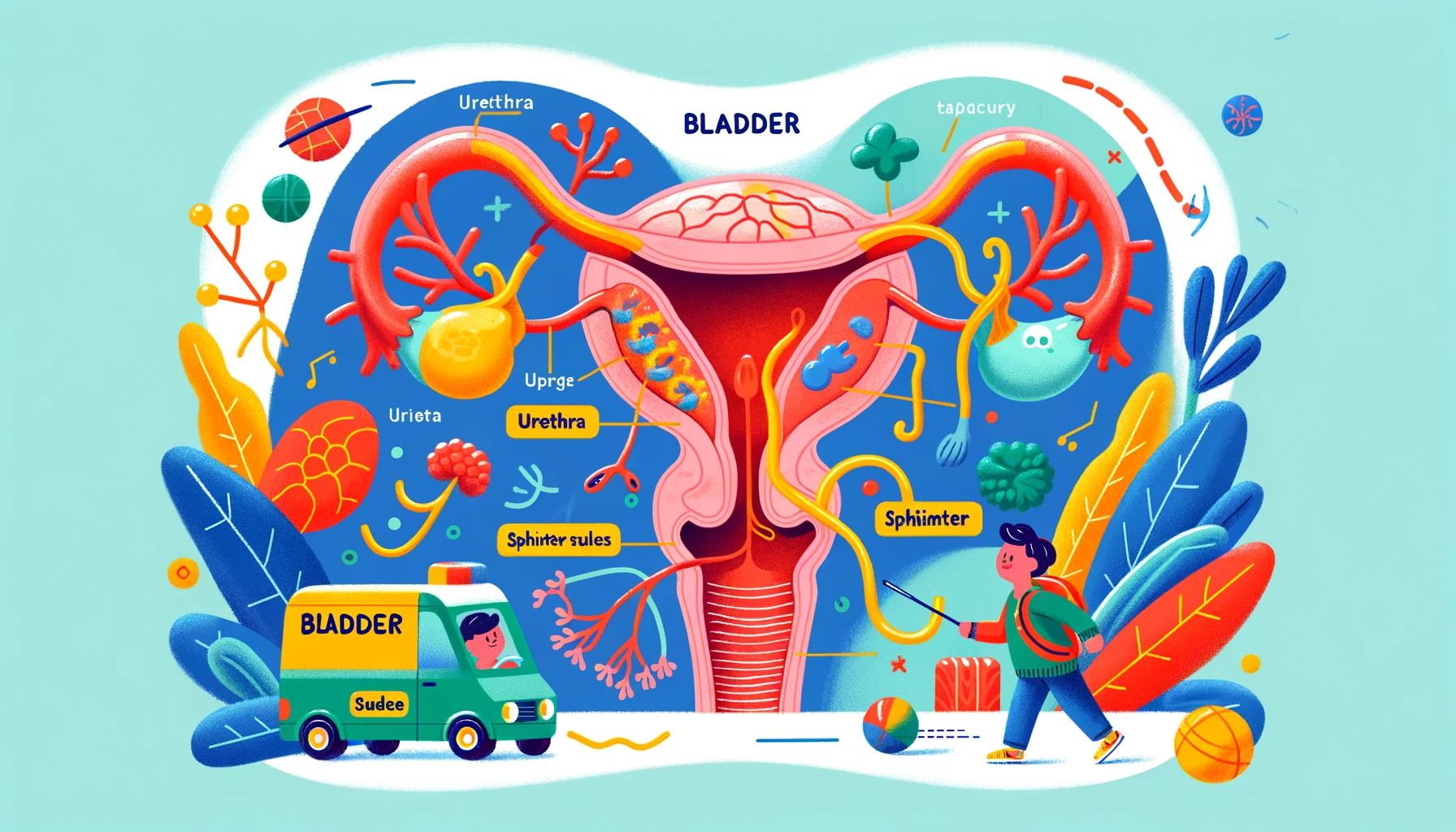How the Bladder Works: Functions and Importance
How the Bladder Works: Functions and Importance
Table of Contents
- Introduction to the Bladder
- Anatomy of the Bladder
- Functions of the Bladder
- The Process of Urination
- Bladder Control and Nerve Signals
- Common Bladder Disorders
- Importance of Bladder Health
- Conclusion
- References
How the Bladder Works: Functions and Importance
Introduction to the Bladder The bladder is a hollow, muscular organ that plays a crucial role in the urinary system by storing and expelling urine. This article explores how the bladder works, highlighting its anatomy, functions, and importance in maintaining overall health.
Anatomy of the Bladder The bladder is located in the pelvis, behind the pubic bone, and can be divided into several parts:
- Fundus: The top part of the bladder.
- Body: The main, central part of the bladder.
- Trigone: A triangular area at the base of the bladder, between the openings of the ureters and the urethra.
- Neck: The lower part that connects to the urethra.
The bladder wall is made up of several layers:
- Mucosa: The innermost lining, which includes a layer of transitional epithelium that allows the bladder to expand.
- Submucosa: A layer of connective tissue that supports the mucosa.
- Detrusor Muscle: A layer of smooth muscle that contracts to expel urine.
- Adventitia: The outer layer of connective tissue.
Functions of the Bladder The primary functions of the bladder are to store urine and expel it from the body:
- Urine Storage: The bladder can store urine produced by the kidneys until it is convenient to expel it. It can hold between 400-600 milliliters of urine in a healthy adult.
- Urine Expulsion: When the bladder reaches its storage capacity, it contracts to expel urine through the urethra in a process called urination.
The Process of Urination Urination, or micturition, involves several coordinated steps:
- Filling Phase: As the kidneys produce urine, it travels through the ureters to the bladder. The bladder stretches and expands to accommodate the increasing volume.
- Storage Phase: During this phase, the bladder remains relaxed while the internal urethral sphincter (a muscle at the junction of the bladder and urethra) remains contracted to prevent urine leakage.
- Voiding Phase: When the bladder is full, stretch receptors in the bladder wall send signals to the brain, creating the urge to urinate. The brain then signals the detrusor muscle to contract and the internal urethral sphincter to relax, allowing urine to flow into the urethra. The external urethral sphincter (under voluntary control) then relaxes to allow urine to be expelled from the body.
Bladder Control and Nerve Signals Bladder control is regulated by a complex network of nerves:
- Autonomic Nervous System (ANS): The ANS controls the involuntary functions of the bladder, including the detrusor muscle contraction and internal sphincter relaxation.
- Somatic Nervous System: This system controls the voluntary functions, such as the external urethral sphincter, allowing conscious control over urination.
- Reflex Arc: The reflex arc involves sensory nerves that detect bladder fullness and send signals to the spinal cord, which then communicates with the brain to initiate the urge to urinate.
Common Bladder Disorders Several disorders can affect the bladder, leading to various symptoms and health issues:
- Urinary Tract Infections (UTIs): Infections in the urinary tract can cause symptoms like frequent urination, burning sensation, and cloudy urine.
- Overactive Bladder: A condition characterized by a sudden, strong urge to urinate, often resulting in involuntary leakage of urine.
- Interstitial Cystitis: A chronic condition causing bladder pain, pressure, and frequent urination.
- Bladder Stones: Hard masses of minerals in the bladder that can cause pain, frequent urination, and blood in the urine.
- Bladder Cancer: Malignant growths in the bladder lining that can cause blood in the urine, pain, and changes in urination habits.
Importance of Bladder Health Maintaining bladder health is essential for proper urinary function and overall well-being:
- Hydration: Drinking plenty of water helps flush out toxins and prevents the formation of bladder stones and UTIs.
- Healthy Diet: A balanced diet rich in fiber can prevent constipation, which can affect bladder function.
- Regular Exercise: Physical activity strengthens the pelvic floor muscles, supporting bladder control.
- Hygiene Practices: Proper hygiene, especially in the genital area, can help prevent infections.
- Monitoring Symptoms: Being aware of changes in urination habits, pain, or blood in the urine can help in early detection and treatment of bladder disorders.
Conclusion Understanding how the bladder works and its role in the urinary system is crucial for maintaining overall health. The bladder’s functions in storing and expelling urine are vital for the body’s waste elimination process. Maintaining bladder health through hydration, a balanced diet, regular exercise, and good hygiene can prevent common bladder disorders and ensure proper urinary function.

<ⓒ WizardMedics (wizardmedics.com)>


